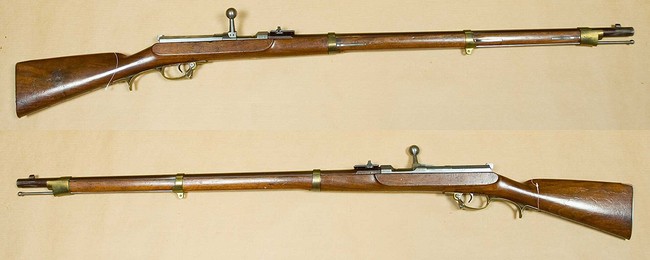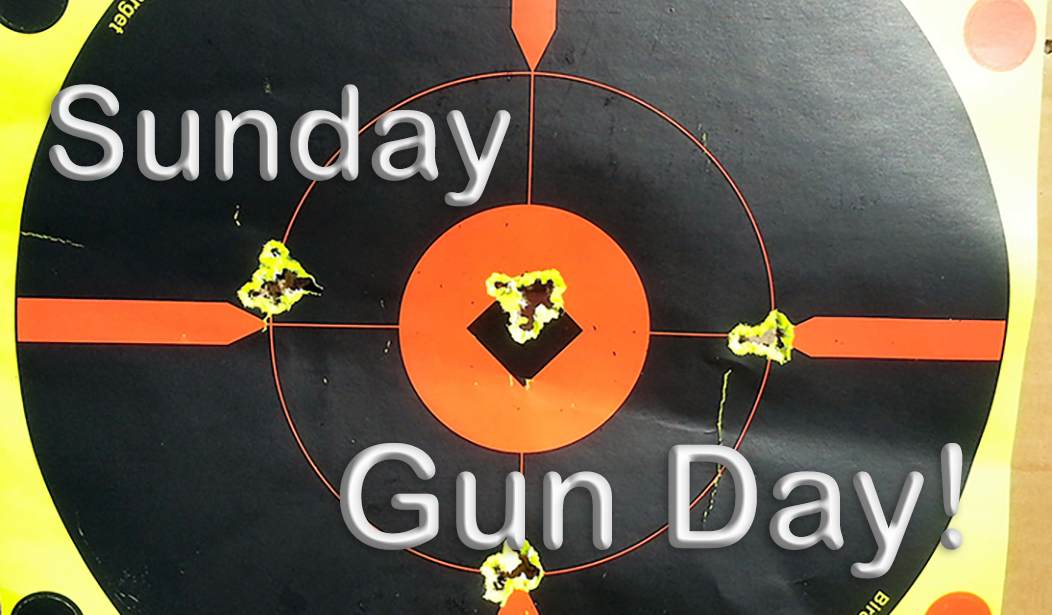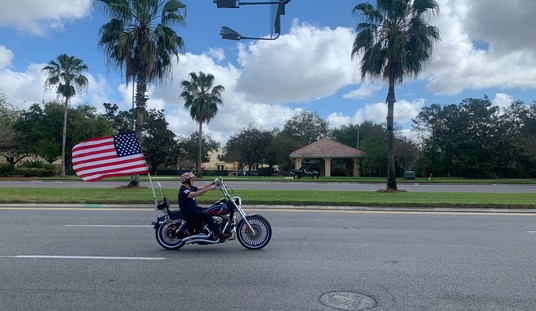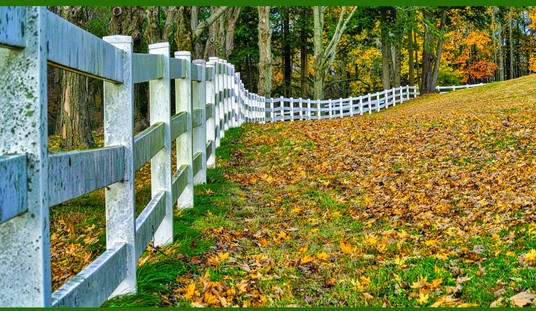In the Beginning: Let There Be Needles.
Unlike our previous two historical studies, this one begins in Europe. The story of bolt-action guns begins in 1824 with a German inventor named Johann Nikolaus von Dreyse.
This was a time when the percussion ignition system was just beginning to replace the flintlock in the game fields and militaries of the civilized world. Most of the guns using the newfangled fulminate ignition systems didn’t change much from the flintlock pattern; they were still single-shot front-stuffers, differing only in a slightly cleaner and more reliable means of igniting the powder charge. Across the Atlantic, the Rocket Ball self-contained cartridge was not yet a gleam in Walter Hunt’s eye, but Johann von Dreyse was already thinking of what the percussion ignition system might allow one to do.
Previously on RedState:
Sunday Gun Day XXV - The History of the Lever Gun, Part I
Sunday Gun Day XXVI - The History of the Lever Gun, Part II
Sunday Gun Day XXVII - The History of the Lever Gun, Part III
It’s important to note that, at this time, breech-loaders were hardly a new thing. Henry VIII owned a breech-loading fowling piece. In the American Revolution, some British troops were even armed with Ferguson flintlock breech-loaders, a single-shot affair where the trigger guard rotated to lower a plug to allow ball and powder to be loaded. In 1811, an American named John Hancock Hall invented another breech-loading flintlock, this one using a lever to raise a portion of the breech that loaded from the front.
In 1824, in his home stadt of the Archbishopric of Mainz, von Dreyse started a factory to manufacture the new percussion caps. Not content to supply the demand for fulminate ignitors, Von Dreyse wanted to make a breech-loader for sale to the Prussian Army, but the new percussion system led to better ideas than the previous flintlock breechloaders were capable of; what von Dreyse came up with was quite a bit better, in fact, than Hunt’s anemic Rocket Ball.
The cartridge resulting from von Dreyse’s work was a real oddball by today’s reckoning. The new round used a 15.4mm (roughly .60 caliber) egg-shaped bullet held in a paper sabot, with a black powder charge in a paper case behind the bullet. The percussion primer was placed at the base of the bullet, requiring a striker to pierce the paper case and pass through the entire powder charge to ignite the primer. This required something longer and thinner than what we are accustomed to nowadays as firing pins; it was, in fact, something very needle-like. What von Dreyse came up with in 1936 and the Prussians adopted five years later (apparently military procurement in those days was several orders of magnitude more efficient than today, requiring only five years to test and approve a new service weapon) was the Leichtes Perkussionsgewehr Model 1841 (Light Percussion Rifle Model 1841) but which became better known as the Zündnadelgewehr, or Needle Gun.
 The Dreyse Needle Gun had several virtues. It was simple, the breechloading mechanism being a cylindrical receiver in which the breechblock rotated and drew to the rear to load the paper cartridge; the breechblock was moved with a simple projecting handle with a round knob, forming the first bolt-action breechloader to be adopted by a major military. The Dreyse breechloader allowed Prussian troops, no slouches by any measure, to increase their rate of fire and therefore be even more efficient at slaughtering their enemies.
The Dreyse Needle Gun had several virtues. It was simple, the breechloading mechanism being a cylindrical receiver in which the breechblock rotated and drew to the rear to load the paper cartridge; the breechblock was moved with a simple projecting handle with a round knob, forming the first bolt-action breechloader to be adopted by a major military. The Dreyse breechloader allowed Prussian troops, no slouches by any measure, to increase their rate of fire and therefore be even more efficient at slaughtering their enemies.
The needle gun cartridge even had an advantage that could not exist with metal-case ammunition. Igniting the powder charge at the front of the load results in a more efficient burn, with the propellant gas expanding from just behind the bullet and consuming more of the charge within the barrel rather than blowing a portion of the unburnt powder from the muzzle, making the flash so characteristic of black-powder arms.
But the Dreyse Needle Gun likewise had several weaknesses. The needle, while designed for easy replacement, was fragile and prone to breakage. The gun, like most black-powder pieces, fouled quickly. When hot and dirty from repeated firing, the bolt took considerable strength to open. But the needle gun was successful enough to warrant an upgrade to cast steel barrels and a stronger action in the 1862 model, and eventually, the factory in Mainz was cranking out 30,000 rifles a year; all in all, the various militaries of the German states fielded over a million needle guns, and orders came in from as far away as Romania and even Japan.
In one of history’s little ironies, it was in a Prussian triumph that the Dreyse needle gun saw its end. In 1870, the Franco-Prussian War broke out. While the Prussians won that war, the French Chassepot breechloader, also based on a turn-bolt action, proved so superior to the Dreyse that it caused the German states to look to upgrade.
How they would do that would lead to the rise to prominence of one of the most famous names in gun-making. But before we examine that, let’s look at the French pieces that led to this decision.
The French? Yes, the French.
In the 1870 Franco-Prussian war, the Prussian troops found themselves facing French soldiers armed with the Chassepot rifle. That weapon’s history has some interesting parallels with the Dreyse.
In the mid-1850s, a French inventor and gunsmith named Antoine Alphonse Chassepot was, like the German von Dreyse, messing about with breechloaders. Like von Dreyse, he had ambitions of selling a breech-loading rifle to the military, albeit the French Army rather than the Prussian.
What he came up with was the single-shot bolt-action breechloader adopted by the French Army as the Fusil modèle 1866. Like the Dreyse, it used a paper cartridge, firing an 11mm (more or less .44 caliber) bullet at a higher muzzle velocity than the bigger bullet of the Dreyse; this led to greater accuracy at longer ranges. Like the Dreyse, the Chassepot was technically a needle gun, using a long, sharply pointed firing pin to fire the primer located inside the paper case, although in the French arm, the primer was loaded at the rear of the cartridge.
Unlike the Dreyse, the Chassepot had a better gas seal in the form of a rubber “obturator” on the bolt, which along with the lighter bullet led to higher muzzle velocities. The French rifle also had sights marked up to 1,600 meters as opposed to the Dreyse’s 600 meters. However, like the Dreyse, the Chassepot rifle was prone to fouling in the action, making the rifle difficult to use when heated and dirty. This was in large part due to the paper cartridge’s inability to form a good gas seal. The addition of the rubber gas seal helped, but the paper cartridge was the problem.
Because of this, the Chassepot rifle was only used in its original form for eight years. To properly examine what came next, we must first look across the English Channel and across the Atlantic.
A New, Better Cartridge
Paper cartridges had several disadvantages. They were fragile, unsuited for use in any kind of repeater, primers were difficult to fix in place, and they could not form a good gas seal in the action. In the Americas at this time, several gunmakers like Spencer and Henry were experimenting with rimfire cartridges, but those also had the limitations of only being suitable for low-powered rounds due to the weakness of the case head and not being reloadable.
But in 1866, two men were working on a solution to that problem and, in an inarguable case of convergent evolution in technology, the solutions they came up with were very similar.
In the United States, the man in question was a New Yorker named Hiram Berdan, who patented a solid-head brass case with a centerfire primer. Berdan’s primer was a simple cap that tightly fit the aperture in the case head, forming a good seal, while the anvil for the primer formed part of that case head, while the flash from the primer entered the case through two small holes on either side of the anvil.
Meanwhile, in Great Britain, Colonel Edward Mounier Boxer of the Royal Arsenal in Woolrich came up with a primer that, like Berdan’s, fit tightly in an aperture in the solid brass case head; unlike Berdan’s primer, the anvil was contained in the primer, while the flash entered the case though a central aperture. This made the Boxer primer better suited for reloading, as the central flash hole made de-capping much easier.
In one of life’s little ironies, today the Berdan primer is used primarily in Europe, while modern American ammunition uses almost exclusively Boxer primers.
As was true with lever guns in the United States, the advent of brass-cased, fixed ammunition would have a significant influence on the development of bolt guns in Europe.
The French Adapt
In 1870, the British Army adopted the famous falling-block Martini-Henry rifle, immortalized by Rudyard Kipling in his poem The Young British Soldier:
When 'arf of your bullets fly wide in the ditch,
Don't call your Martini a cross-eyed old bitch;
She's human as you are -- you treat her as sich,
An' she'll fight for the young British soldier.
Cross-eyed old bitch the Martini-Henry may have been, but the .450/577 paper-patched brass cartridge it used caught the attention of the French. France responded by adapting the Chassepot design to use a new brass cartridge, the 11x59R Gras, resulting in the Fusil Gras Modèle 1874. This was a singular improvement over the paper-cartridge Chassepot, and Gras rifles were used up until the Great War, at which point 140,000 or so Gras rifles were modified to use the 8mm Lebel cartridge then in front-line use.
The Gras was a very successful single-shot bolt gun, and there was even a repeating version, wherein the regular Gras rifle was fitted with an awkward, cumbersome gravity-feed hopper. That part was not successful, but the Gras saw service with many armies besides the French, including Greece, Monaco, Russia, and Spain, among others.
But while all this was going on, across the Rhein in Bavaria, two brothers were looking at the success of the Gras and thinking they could go one up on the French designers. Those brothers were Paul and Wilhelm Mauser, and theirs was a name that would end up as one of the most significant in firearms history.
Back to Germany - Two Brothers Named Mauser
Back in Germany, in the little village of Oberndorf am Neckar, two brothers were getting into the gun business. Paul (given name Peter Paul, but generally referred to as Paul in the documentation I’ve seen) and Wilhelm Mauser were a good team of industrialists; Paul was the engineer and designer, while Wilhelm was the businessman.
I’ve had the good fortune to have visited Oberndorf. It remains a pleasant, scenic little town along the Neckar River south by southwest of Stuttgart, home not only to the original Mauser-Werke but also to the Heckler & Koch plant – or, at least it was all those things in 1997 when I was there. It’s a typically beautiful little Bavarian village set in a valley in the Bavarian forest; the Neckar river winds placidly through the town, and there are several wonderful gasthauses where one can enjoy a plate of schnitzel and an early-afternoon pilsner. I was lucky enough to have done so and would love to do so again.
I think the H&K works have moved, and the original Mauser-Werke ceased operations in 2004. The Mauser name continues, though, as a new company has licensed the trademark to make some pretty expensive, high-end bolt guns on the original Mauser pattern.
Oberndorf was no doubt an equally pleasant place in 1870 when the brothers Mauser put the finishing touches on a single-shot bolt rifle intended for the various German militaries. Their final design became the Infanterie-Gewehr 71 (Infantry Rifle 71) and was the first commercial success for Mauser in a rifle design. Firing an 11mm (.44 caliber) black-powder cartridge, the single-shot 71 Mauser didn’t look much like the iconic Mauser rifles of later years. The action lockup was accomplished by combining a single locking lug with a bolt guide rib, and of course, the piece had no magazine. The one feature the Model 71 had was the over-the-top Mauser wing safety on the bolt shroud, which would eventually become one of Mauser’s more recognizable features.
The 1871 Mauser would see several modifications and variations over the years until it was eclipsed by later designs. But the famous name Mauser started here, with that single-shot 11mm infantry rifle. Wilhelm Mauser died in 1882 but lived to see the 71 and its variations used all over Europe, by the Ottoman Empire, Serbia, Austria, by the Irish Volunteers, and in as far-flung places as China and Uruguay. His brother Paul would continue designing bolt guns, eventually coming up with the model that would set the standard for bolt rifles until… well, today.
For the best history of Mauser rifles available, I cannot recommend Ludwig Olson’s Mauser Bolt Rifles strongly enough. A copy of that work is in my permanent arms-reach desktop reference collection.
And Then This Happened
All over Europe, the various militaries were switching to single-shot bolt guns firing brass black-powder cartridges. But in Switzerland, a nation better known by most folks for discreet banking and chocolates, the Swiss Army was quietly adopting a different kind of bolt gun, one that borrowed an idea from an American design. We’ll examine the rest of Europe’s forays into bolt guns in another segment.
But there was another big change in firearms technology on the horizon. Remember the big impact smokeless powders had on the development of six-guns and lever guns? Well, the impact on bolt guns was no less profound, and while many manufacturers were about to spring on this new technology when it comes to bolt guns, the designers at Mauser-Werke were ahead of the pack. But that’s also a subject for later in the series.














